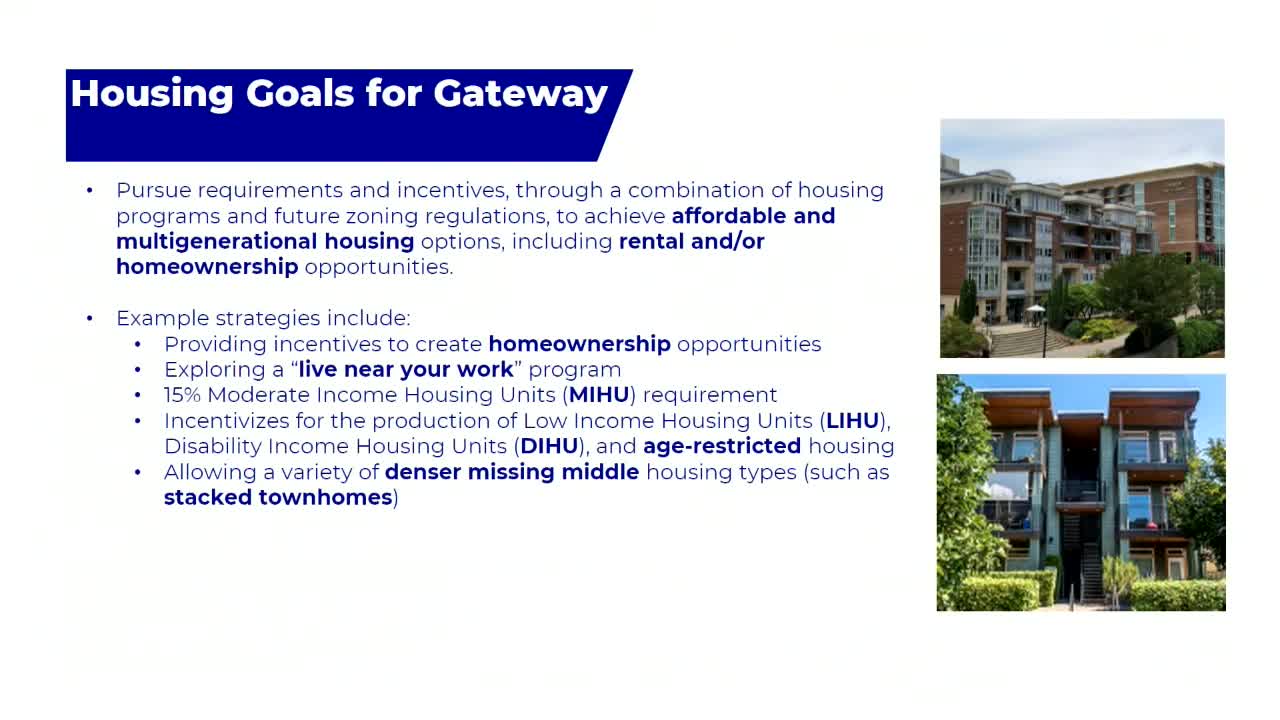Gateway Planning Commission proposes strategies for homeownership and diverse housing types
September 08, 2025 | Howard County, Maryland
This article was created by AI summarizing key points discussed. AI makes mistakes, so for full details and context, please refer to the video of the full meeting. Please report any errors so we can fix them. Report an error »

In the heart of Howard County, Maryland, a recent government meeting illuminated the community's ambitious plans for housing development, aiming to address the growing demand for diverse living options. As discussions unfolded, officials outlined a comprehensive strategy designed to promote homeownership and enhance the local housing landscape.
The meeting revealed a multi-faceted approach to housing, emphasizing the need for incentives to create homeownership units. Among the proposals was the introduction of a "live near your work" program, which aims to connect residents with job opportunities while fostering community ties. Additionally, a requirement for 15% of new developments to include moderate-income housing units (MIHUs) was highlighted, alongside incentives for constructing low-income, disability-accessible, and age-restricted units.
As the conversation progressed, the focus shifted to the concept of "missing middle housing," which includes denser options like stack townhomes. These types of residences are not only in demand but also support the goal of increasing homeownership opportunities in the area. Officials expressed optimism about attracting a diverse range of residents, from those looking to rent to those eager to buy, particularly in the Gateway area.
However, the path to achieving these housing goals is not solely reliant on zoning changes. While zoning can facilitate the development of various housing types, the meeting underscored the necessity of employing a broader toolkit. This includes financial programs, tax incentives, regulatory adjustments, and fostering public-private partnerships to encourage developers to build for-sale units.
The current zoning map for Gateway primarily supports industrial and office uses, which poses challenges for residential development. Future zoning regulations will need to strike a balance, allowing for business growth while also accommodating the community's housing needs. Officials acknowledged existing limitations, such as height restrictions and setbacks that hinder the construction of closely spaced buildings, and emphasized the importance of flexibility in future zoning efforts.
As the meeting concluded, the vision for Howard County's housing future became clearer. With a commitment to innovative strategies and community-focused planning, officials are poised to reshape the local housing market, ensuring it meets the needs of a diverse population while fostering economic growth. The discussions set the stage for a transformative journey ahead, one that promises to enhance the quality of life for residents in Howard County.
The meeting revealed a multi-faceted approach to housing, emphasizing the need for incentives to create homeownership units. Among the proposals was the introduction of a "live near your work" program, which aims to connect residents with job opportunities while fostering community ties. Additionally, a requirement for 15% of new developments to include moderate-income housing units (MIHUs) was highlighted, alongside incentives for constructing low-income, disability-accessible, and age-restricted units.
As the conversation progressed, the focus shifted to the concept of "missing middle housing," which includes denser options like stack townhomes. These types of residences are not only in demand but also support the goal of increasing homeownership opportunities in the area. Officials expressed optimism about attracting a diverse range of residents, from those looking to rent to those eager to buy, particularly in the Gateway area.
However, the path to achieving these housing goals is not solely reliant on zoning changes. While zoning can facilitate the development of various housing types, the meeting underscored the necessity of employing a broader toolkit. This includes financial programs, tax incentives, regulatory adjustments, and fostering public-private partnerships to encourage developers to build for-sale units.
The current zoning map for Gateway primarily supports industrial and office uses, which poses challenges for residential development. Future zoning regulations will need to strike a balance, allowing for business growth while also accommodating the community's housing needs. Officials acknowledged existing limitations, such as height restrictions and setbacks that hinder the construction of closely spaced buildings, and emphasized the importance of flexibility in future zoning efforts.
As the meeting concluded, the vision for Howard County's housing future became clearer. With a commitment to innovative strategies and community-focused planning, officials are poised to reshape the local housing market, ensuring it meets the needs of a diverse population while fostering economic growth. The discussions set the stage for a transformative journey ahead, one that promises to enhance the quality of life for residents in Howard County.
View full meeting
This article is based on a recent meeting—watch the full video and explore the complete transcript for deeper insights into the discussion.
View full meeting
